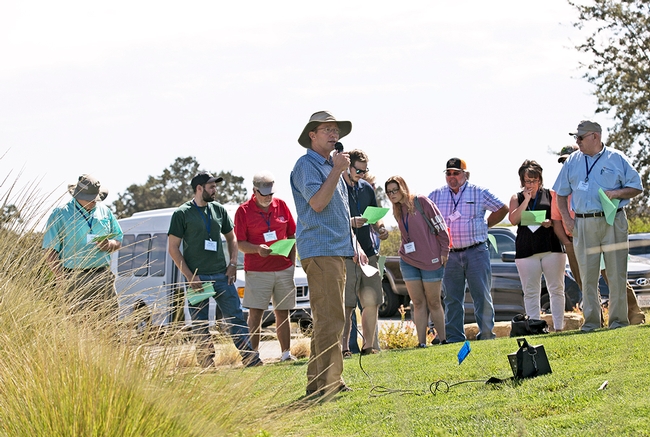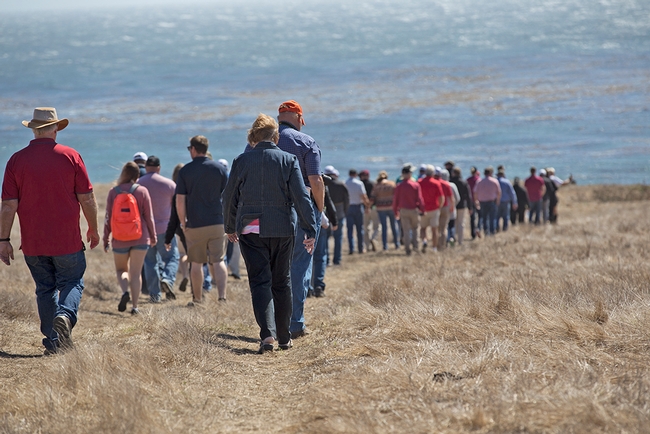- Author: Jeannette E. Warnert
UC Agriculture and Natural Resources hosted members of the national Research Center Administrators Society (RCAS) in September for a tour, traveling from San Jose to Visalia, up to the mountains and then west to Paso Robles and Monterey, providing first-hand knowledge about the extraordinary agriculture industry and natural resources of the San Joaquin Valley and Central Coast.
The 50 participants – research station managers, directors and university, college and USDA administrators – visited the San Romero Visitors Center at the San Luis Reservoir, where they learned about the state and federal complex of facilities that form the California State Water Project and the federal Central Valley Project. The tour continued through the heart of the San Joaquin Valley, an agricultural region that supplies supermarkets around the nation and world with a diversity of fruits and vegetables.
“The RCAS annual tours give research center directors and superintendents from across the country an opportunity to talk in informal settings about issues we have in common,” said Lisa Fischer, director of UC ANR's Research and Extension Center System. “Our tour in September also allows us to show the great things we are doing in California.”
At the 330-acre UC Kearney Agricultural Research and Extension Center in Parlier, the visitors toured research plots of pistachios, almonds, tree fruit, wine and table grapes, and other crops, before traveling to the source of much of California water, the Sierra Nevada. In Sequoia-Kings Canyon National Park, the research station administrators saw the largest trees in the world.
While driving west across the vast San Joaquin Valley, the participants witnessed the change in cropping patterns, from citrus trees at the foot of the Sierras to vast dairy operations in Tulare and Kings counties, and farms that stretch thousands of acres in the west side of the valley,
As the bus ascended the Coast Range, UC Cooperative Extension advisor Royce Larsen pointed out the charred areas along the road where grass fires had robbed ranchers of forage for their cows. Larsen shared the other challenges faced by coastal rangeland managers and a new land use interest, developing solar farms in hot dry areas where irrigation water resources have dried up.
During the midday stop at J. Lohr Vineyards in Paso Robles, UCCE viticulture advisor Mark Battany detailed the growth of the local wine industry.
“In 1970s, there was about 1,000 acres of winegrapes in San Luis Obispo County,” Battany said. “In the 1990s and 2000s, we had an explosion of interest. Now have 50,000 acres of vineyards and the industry provides a tremendous boost to the local economy – with things like luxury hotels and fine dining.”
When the group reached the beach, the wind blew ferociously during a tour of the Kenneth S. Norris Rancho Marino Reserve in Cambria. Situated on a beautiful stretch of coastline, the reserve includes rocky shoreline, freshwater ponds, coastal grasslands and a mixed Monterey pine and coast live oak forest. In this UC research facility, development rights were donated to UC for research in perpetuity, but the owner reserves the right to build homes for family and workers.
The tour ended with visits to the Monterey County Ag and Rural Life Museum, a strawberry farm and the UC Cooperative Extension office in Monterey County.
“It was an honor for us to expose research directors to California agriculture,” Fischer said. “Many come from states that only produce two or three commodities at the commercial level. In California, we produce more than 400 commodities.”




